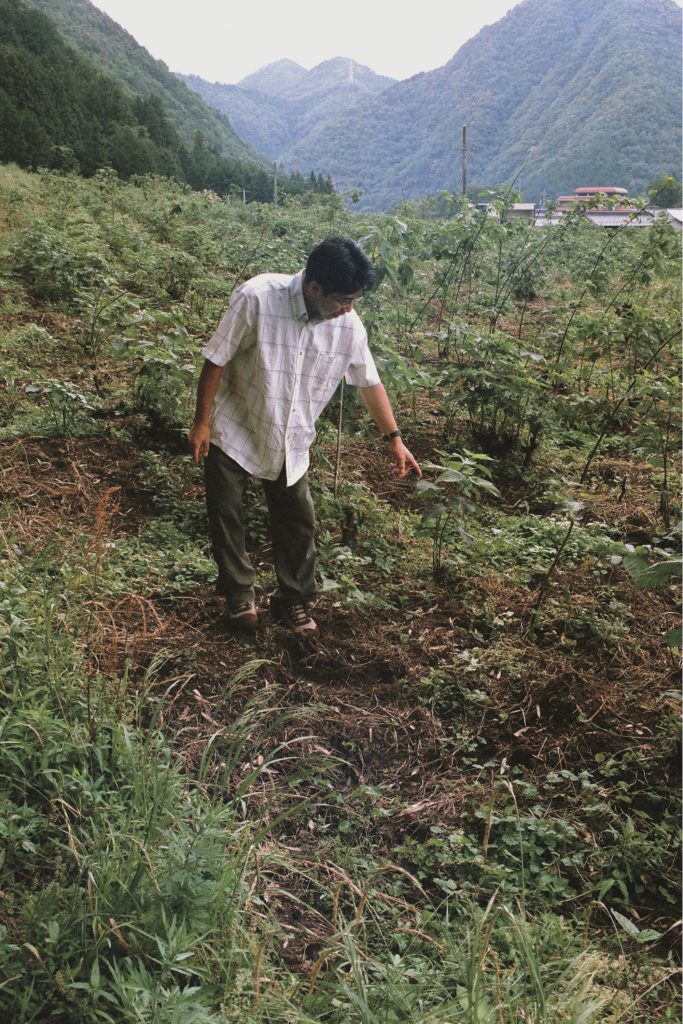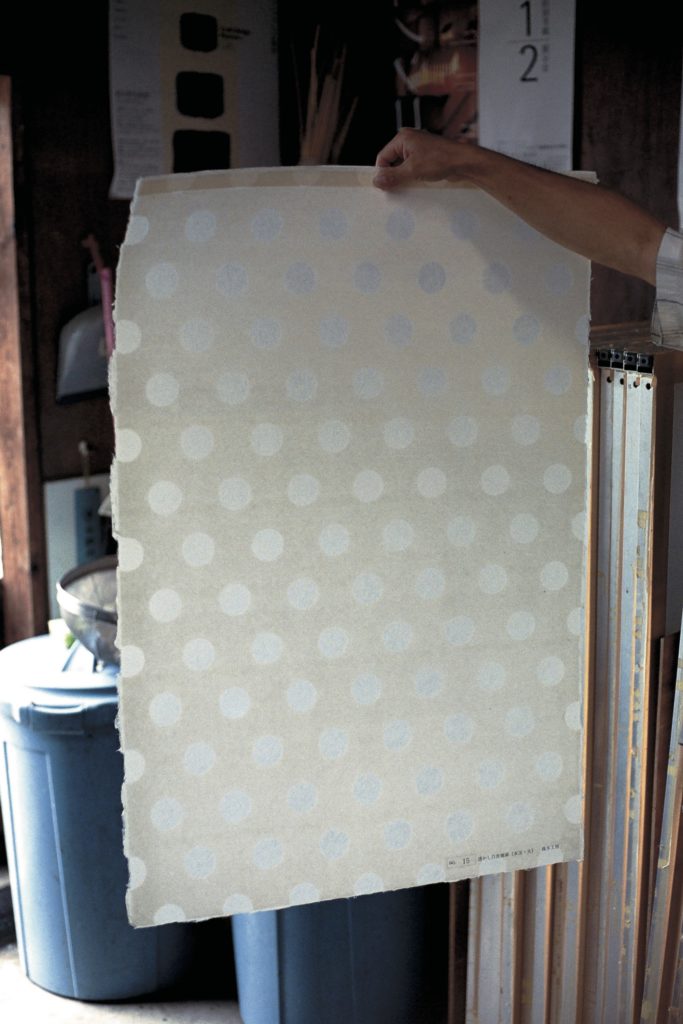
Story 03 | Tradition Grown from Trees
Tradition is an echo, heard slightly differently by each new generation; a pattern of knowledge passed from old to young. Adaptation is the only way to guarantee the survival of these echoes; it’s the maxim of all natural systems– adapt or die. Washi itself is one such adapted echo, since the time it was first introduced to Japan in 610 from China thanks to a Korean Buddhist priest named Doncho. The imported paper proved too fragile for Japanese uses and so, as an adaptation, strong and fibrous Kozo bark was used as pulp. In the workshop of Hoki Naritoshi, a younger Mino paper maker, we get a sense of how washi is beginning to adapt to the contemporary world.
“I want to create new paper that has more uses for the world today, beyond the restoration of old paintings and parchments” he says. As a start Naritoshi has began adding natural color dye to his paper mixture. It may not seem like a radical change, but Mino’s trademark is brilliant white washi and the colour has strong reverberations. Naritoshi also mastered a complex Sukihashi technique allowing him to create patterns with different thicknesses on the same sheet allowing his paper to be used to create luxury umbrella’s, lampshades and other products. His approach gives hope to a tradition which has been through dark times: “During the 90‘s bubble period no one wanted to make handmade paper, there was too much money to be made elsewhere.” Ironically, the primary concern among Mino paper makers now is how to make their craft financially sustainable.
Naritoshi leads us up the road to a valley containing Mino’s first plantation of Kozo tree’s. Rather than use Kozo from Ibaraki, (the traditional source for Mino paper makers) Mino has decided to make it’s washi self-sustainable. But sustainability is not a simple (or solitary) action, “I tried to grow my own Kozo tree’s actually, but I was so busy making paper that I neglected the tree’s and bugs ate them. You can’t do everything by yourself, paper making is a collective activity.”
< PAPERSKY no.33(2010) >












